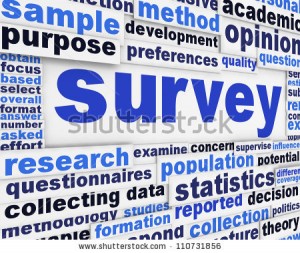Diagnostic Data Collection
There are a number of methods which can be used to collect data to complete the diagnostic within the OD cycle.

Questionnaires, Surveys and Checklists
- WHAT – A questionnaire is a research instrument consisting of a series of questions and other prompts for the purpose of gathering information from respondents.
- WHY – Designed for statistical analysis of the responses,often have standardized answers that make it simple to compile data.
- ADVANTAGES – Cheap, do not require as much effort from the questioner as verbal or telephone surveys. Can generate a large quantity of data and can be analyzed used statistical methods.
- DISADVANTAGES – Standardized answers may frustrate users. Limited by the fact that respondents must be able to read the questions and respond to them. May not be practical.
Interviews
- WHAT – Interviews are a qualitative research methods consisting of a conversation between two or more people where questions are asked by the interviewer to glean facts or statements from the interviewee.
- WHY – Provides a description of meanings regarding the central themes in the world of the interviewee. Helps develop an understanding to the meaning of what information the interviewees provide.
- ADVANTAGES – Exploratory in nature, allows for more flexibility and depth of detail from the interviewee. Questions can be tailored in order to get rich, full stories and the information relevant for the OD project.
- DISADVANTAGES – Can be time consuming and costly. Difficult to recruit people for interviews due to the personal nature of the interview and getting time to meet when participants can cancel or change the meeting place at the last minute. The interviewer might miss some information because they are multitasking during the interview. Coding an interview is very time consuming.
Document Review
- WHAT – Collecting data by reviewing existing documents. Documents may be hard copy or electronic and may include strategic and tactical plans, reports, performance management data, proposals, meeting minutes, newsletters, and marketing materials
- WHY – Important to gather background information to answer what, how and who for the OD programme. Determine if implementation of the program reflects program plans. Provides evidence to develop other data collection tools for diagnostic and evaluation processes.
- ADVANTAGES – Relatively inexpensive method of data collection and an unobtrusive source of background information. Provides information that may not be directly observable or expose issues not noted by other means
- DISADVANTAGES – Can be time consuming to collect, review, and analyze many documents and much of the information may be inapplicable, disorganized, unavailable, or out of date. Could be biased, incomplete or inaccurate.
Observation
- WHAT – gathering data by watching behaviour, events, interactions or noting physical characteristics in their natural setting.
- WHY – Provides understanding of an ongoing process or situation, especially in regards to what is really happening versus what is supposed to happen. Essential when gathering data on individual behaviours or interactions between people and seeing the place or environment will increase understanding of the event, activity, or situation you are evaluating. Useful when data collection from individuals is not a realistic option
- ADVANTAGES – Data can be collected where and when an event or activity is occurring. You can see what people do rather than read a report about what people said they did, which might not be accurate. Method does not rely on willingness or ability to provide information.
- DISADVANTAGES – Expensive and time-consuming compared to other data collection methods. Data collection can be susceptible to observer bias or the “hawthorne effect,” where people usually perform better when they know they are being observed (indirect observation may decrease this problem). Only provides data on what is happening it does not increase your understanding of why people behave as they do.
Focus Groups
- WHAT – a form of group interview.
- WHY – Uses group interaction encouraging people to talk to one another: asking questions, exchanging anecdotes and commenting on each other’s experiences and points of view.
- ADVANTAGES – Quick and convenient way to collect data from several people simultaneously. Useful for exploring people’s knowledge and experiences. Can be used to examine what people think, how they think and why they think a particular way.
- DISADVANTAGES – Group norms may silence individual voices of dissent and the presence of other research participants can compromise confidentiality.
Case Studies
- WHAT – In depth investigation of a single person, group or event, which involves the collection and presentation of detailed information about a particular topic. Explores cause-effect relationships with an emphasis on exploration and description.
- WHY – Used to draw conclusions about a particular area of interest, in a specific context.
- ADVANTAGES – Provides detailed qualitative information and insight for areas that require further investigation. Powerful tool which can be used to communicate the OD programme externally.
- DISADVANTAGES – Time consuming. The results are specific to the subject of the case study. Researcher bias.
